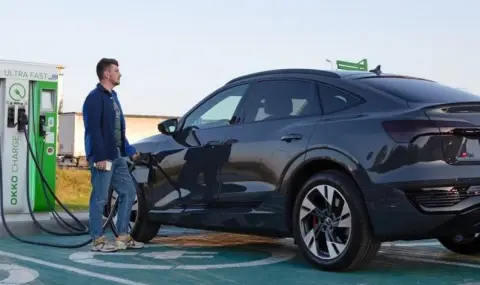According to a new report, sales of electric vehicles will continue to grow, despite the current short term prospects. Researchers explain this trend with several main arguments. The long-term outlook for electric vehicles indicates that the rapid decline in battery prices, advances in next-generation battery technology, and improvements in the relative cost-effectiveness of electric vehicles compared to their gasoline and diesel counterparts will boost market growth globally. However, the report notes that the window to achieve global zero emissions is now narrower than ever. Here are the seven key takeaways from the report:
1. Over the next few years, global sales of passenger electric vehicles will continue to grow, but more slowly than before
Sales of passenger electric vehicles are expected to exceed 30 million in 2027 and grow to 73 million annually in the 2040s. Over the next four years, electric vehicle sales will grow by an average of 21% annually in the absence of new policy intervention, compared to an average of 61% between 2020 and 2023. The share of electric vehicles in global new passenger car sales will increase to 33% in 2027 from 17.8% in 2023. Only China (60%) and Europe (41%) will surpass this global average. By 2027, sales of electric cars in Brazil will increase fivefold, and in India threefold.
2. Sales of cars with internal combustion engines have reached their peak
Sales of cars with internal combustion engines peaked in 2017 and will be 29% lower by 2027. The transition to electric cars is now the main method of decarbonising road transport. Hybrids may play a significant role in the near future, especially in markets with increasingly stringent fuel economy regulations, but not in the long term. By 2030, hybrids are projected to account for between 5% and 45% of total sales, depending on the market.
3. By the 2030s, electric heavy-duty trucks will be economically viable for most use cases
In the heavier segments, battery electric trucks will initially be used primarily in urban duty cycles. But their efficiency is improving even over long distances and will approach the performance of diesel units, which will happen around 2030. Until now, electric trucks have not reached the desired mileage, and the Tesla truck in general disappointed almost everyone who was waiting for it. However, the prospects for fuel cell trucks to be enforced are much smaller.
4. Lithium iron phosphate (LFP) batteries are taking the electric vehicle market by storm
Improvements in LFP technology are increasing their market share, especially in China, where battery prices are plummeting. In the next two years, LFP's share of the global passenger electric vehicle market will exceed 50%. As a result, nickel and manganese will rise, but due to the shift to cheaper chemicals, nickel and manganese consumption will decrease by 25% and 38% respectively by 2025.
5. To meet the growing demand for electricity for electric vehicles, the charging industry will need to develop rapidly
Analysts expect this to happen in the next decade. Depending on the scenario, by 2050 the cumulative investment in infrastructure, installation and maintenance of charging stations will be between 1.6 and 2.5 trillion US dollars.
6. Excess capacity is a big problem for battery manufacturers
Currently, the planned production capacity for the production of lithium-ion cells by the end of 2025 is more than five times higher than the global demand for rechargeable batteries, which is expected to be at the level of 1.5 terawatt hours this year. However, annual demand for lithium batteries will grow rapidly in BloombergNEF's economic transition scenario, approaching 5.9 terawatt hours per year by 2035.
7. Achieving a global zero-emission fleet by 2050 requires a much faster transition
Despite progress, global road transport is still nowhere near the zero trajectory. By 2035, there will be 476 million electric cars on the road, and by 2040 their number will grow to 722 million, which will make up 45% of the car fleet. In the net zero scenario, by 2050 these numbers would have to be 679 million and 1.1 billion, respectively. The zero scenario predicts that 100% of the car fleet will be electric by 2050, but analysts now say we will only be able to achieve 69% of these results by 2050.
